ICC Cleaner side
Cleaning made accessible.
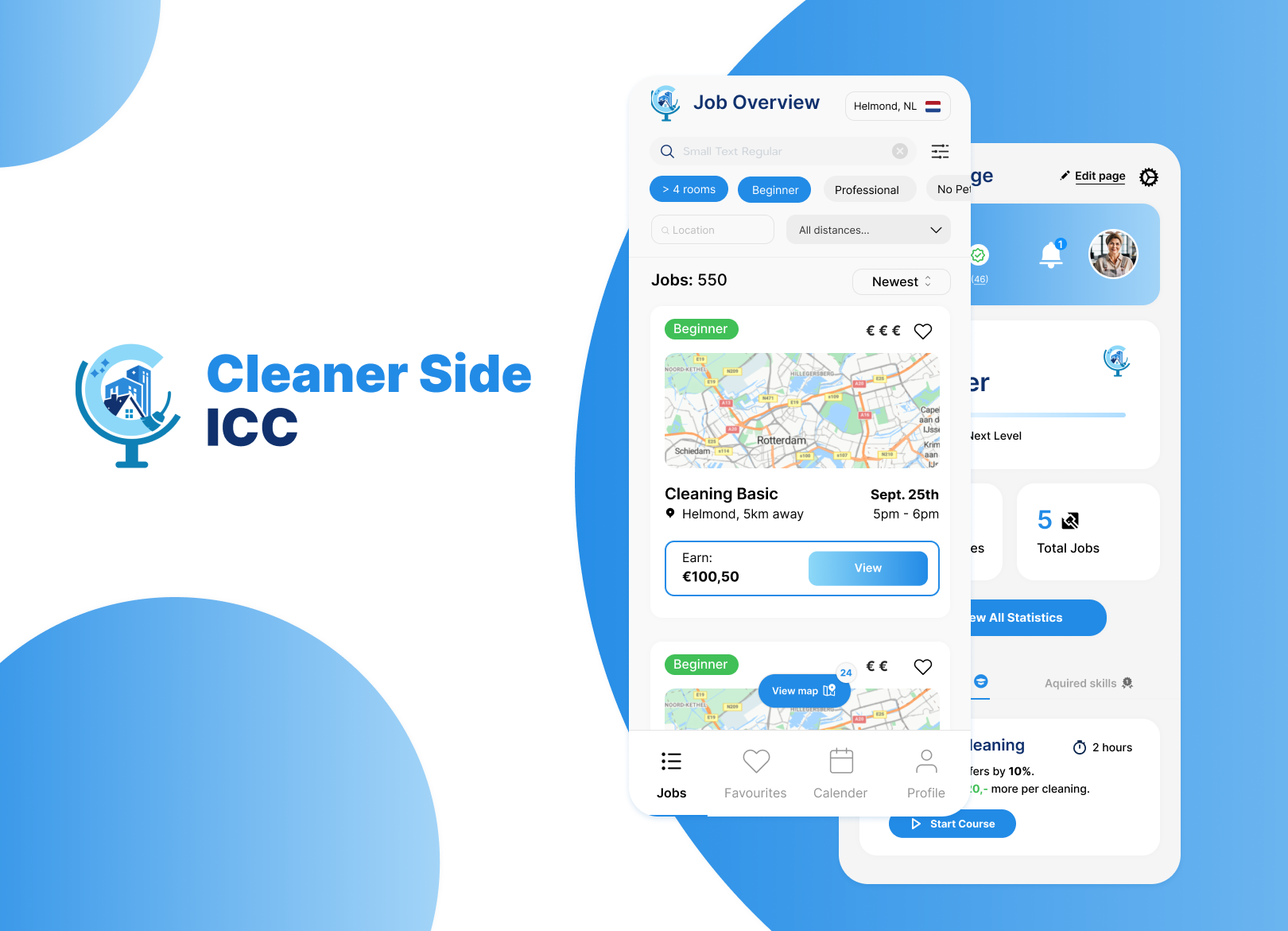
ICC Cleaner side
ICC Cleaner Side was a project commissioned by ICC Cleaning Company, aimed at improving the interaction between freelance cleaners and clients through a user-friendly and reliable web-based platform. This initiative was part of a broader effort to enhance service quality and trust in the cleaning industry.
The assignment:
Create a web-based platform that streamlines the process of registering freelance cleaners, ensures their qualifications, and facilitates seamless client bookings. The platform needed to focus on a mobile-first design and provide an intuitive experience for both cleaners and clients. Our team was specifically responsible for the UI and UX design, while the final implementation would be handled by a separate development team.
My role:
UX research, UI Design,
Work method:
Agile scrum, design thinking, User Research & Testing, Information Architecture, High-Fidelity Prototyping (Figma), cross functional collaboration.
Chapter 1
Research
Who is the User?
To create an effective platform for ICC Cleaner Side, understanding who our users are was essential. Our primary users are freelance cleaners, a diverse group that includes individuals from various cultural backgrounds, mainly women aged between 20 to 45. These cleaners often work part-time, seeking flexibility and supplemental income. Given the demographic characteristics, many have a lower level of education, making it crucial that our system is intuitive and visually oriented. Moreover, many of these cleaners do not speak English or Dutch fluently, necessitating the inclusion of multiple language options to ensure accessibility.
We began by conducting extensive research to get a clear picture of our target audience. This involved creating a detailed document that outlined the demographics, psychographics, and behaviors of potential users. We also developed personas to represent typical users, which provided both the team and the product owner with a concrete reference for design and development decisions. These personas helped us empathize with our users, guiding our decisions on what features to prioritize and how to design the user interface.
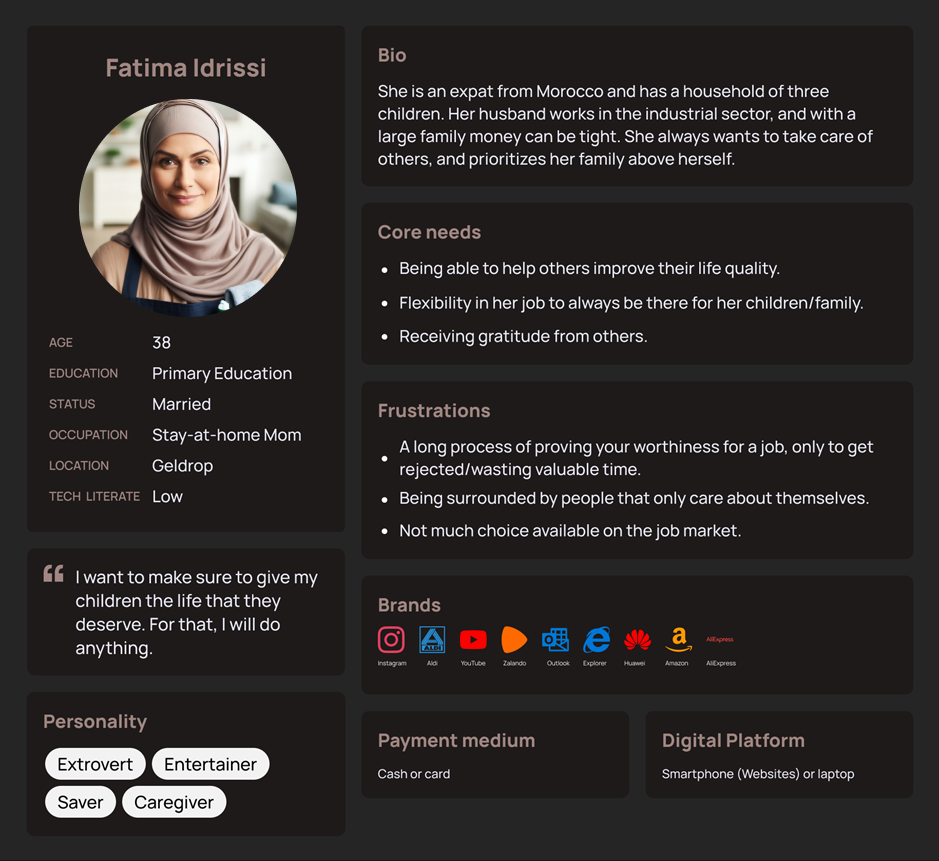
What Do Users Need?
Our research revealed several key needs for our target users. Cleaners require a straightforward, easy-to-navigate registration process. This means minimizing the documentation required and ensuring that any mandatory steps, such as background checks, are clearly explained and simple to complete.
To understand these needs better, we conducted interviews with freelance cleaners and potential users. We asked about their daily routines, challenges they face, and what they look for in a platform. This hands-on research provided invaluable insights into their pain points and preferences. For instance, many cleaners expressed the need for an intuitive job management system that would allow them to easily track their schedules, hours worked, and communicate with clients. deals.
Another critical aspect is building trust and validation within the platform. Cleaners need assurance that the platform will protect their interests, and clients need to trust the cleaners coming into their homes. This involves integrating background checks and possibly offering certifications to verify skills and reliability.
Through these interviews and surveys, we also identified the need for robust support systems. Cleaners should be able to access resources that help them improve their skills and understand job requirements. Additionally, the inclusion of gamification elements, such as badges for achievements, could make the platform more engaging and rewarding, thus motivating cleaners to perform better.
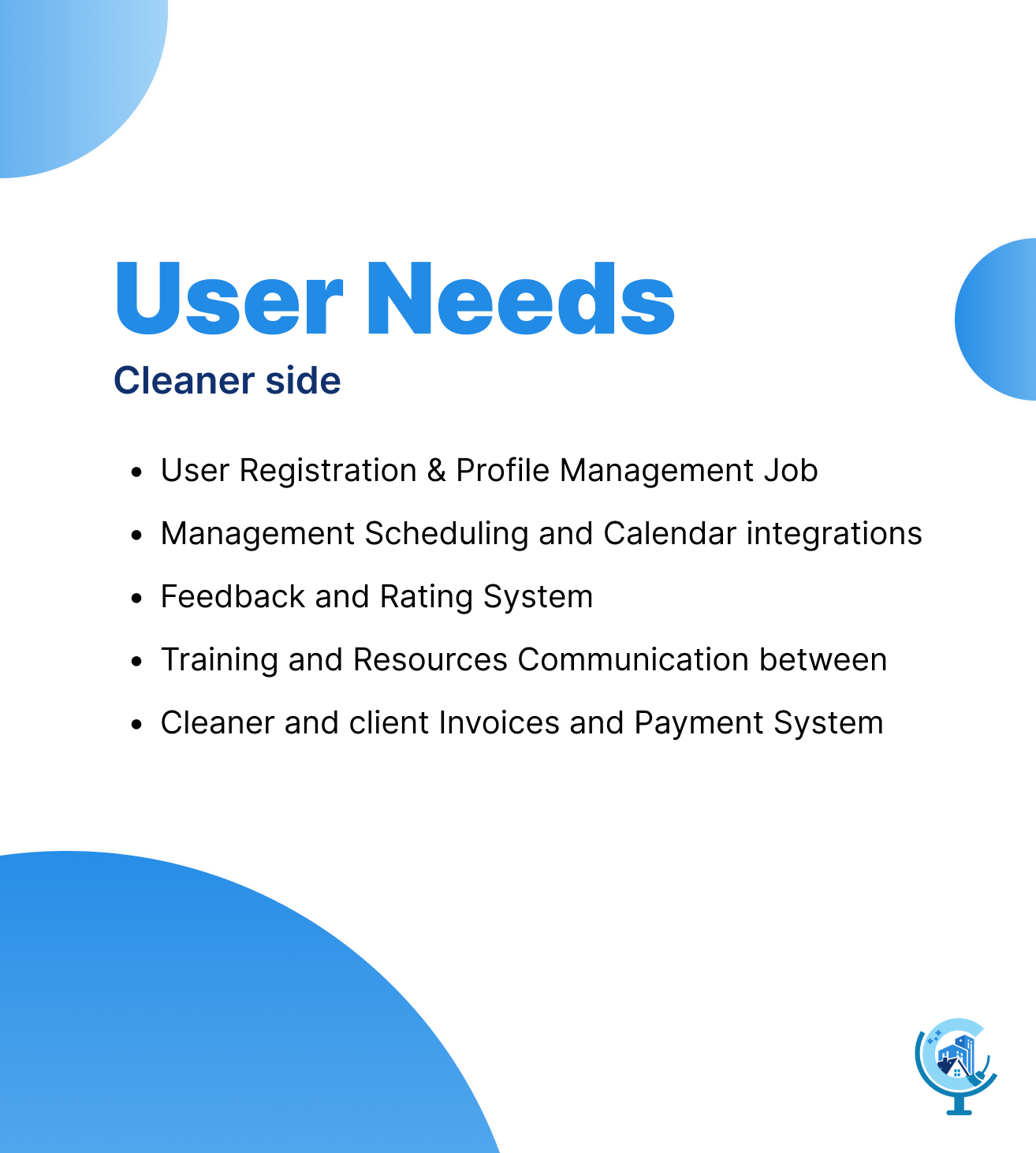
Competitor analysis
To ensure our platform stands out in a competitive market, we conducted a detailed analysis of existing solutions. We examined several major players, including Fantastic Services and Helpling, to understand their strengths and weaknesses.
Our analysis revealed that many competitors offer a broad range of cleaning-related services with user-friendly booking systems. However, we found common issues such as cumbersome registration processes, poor mobile app design, and significant management responsibilities placed on cleaners. These insights highlighted areas where we could innovate and improve.
Key takeaways from our research included the necessity of simplifying the registration process, enhancing the user interface, incorporating AI for better job matching, and providing robust support and flexible working options. These improvements would not only attract new cleaners but also retain them by offering a more satisfying and efficient user experience.
In essence, this chapter of our project was about diving deep into understanding the landscape in which ICC Realm operates and identifying how we could create a platform that truly meets the needs of freelance cleaners. This thorough research and analysis laid the groundwork for developing a user-centric platform that not only addresses current gaps but also offers innovative solutions to enhance the user experience.
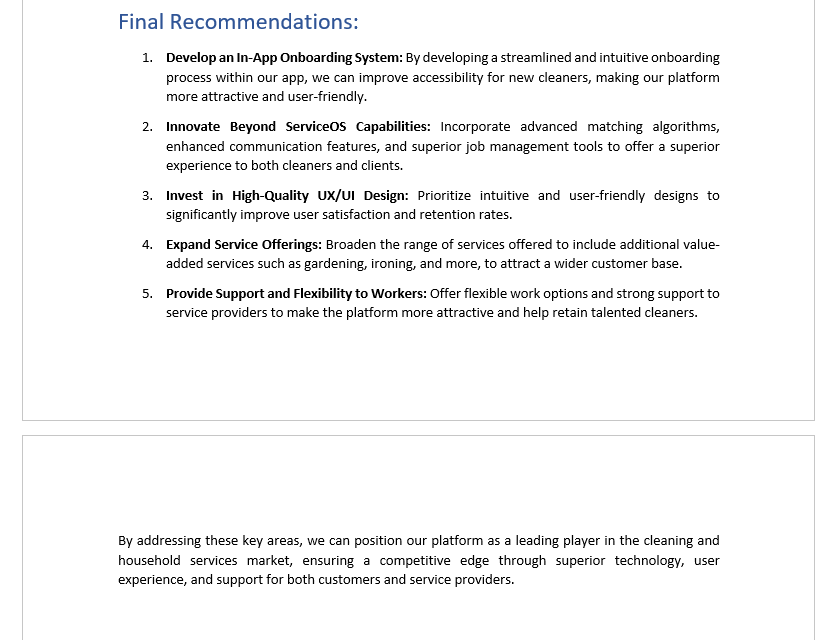
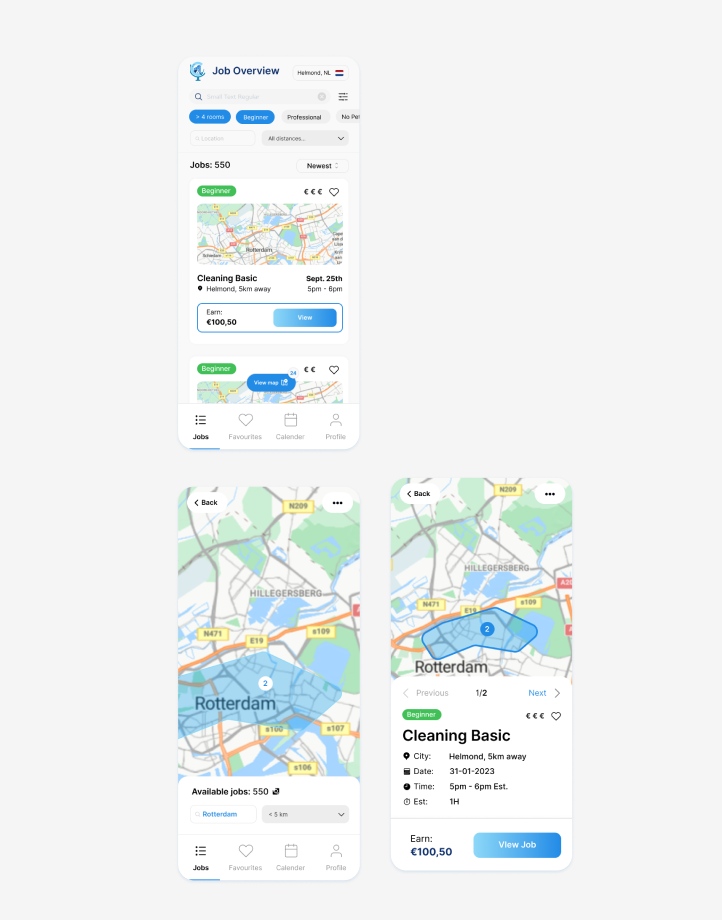
Chapter 2
Analysing & defining, ideate
Identifying Needs and Opportunities
Through our research, we discovered a significant willingness among freelance cleaners to join a platform like ICC Cleaner Side, provided it was easy to use and beneficial for their professional growth. Cleaners emphasized the importance of a straightforward registration process, reliable job opportunities, and robust support systems. They were particularly interested in features that would help them manage their schedules, track their working hours, and communicate effectively with clients.
One of the most critical aspects identified was the process of claiming jobs. Cleaners need detailed information about available jobs to make informed decisions. Key details include the location, time, and specific cleaning tasks required. Information such as whether the job involves cleaning a home or an office, the size of the space, and the pay rate are crucial. This ensures that cleaners can choose jobs that fit their schedules and preferences, enhancing their work experience and satisfaction.
The Concept
The core concept of our platform is a web-based application designed specifically for freelance cleaners. The platform offers a streamlined registration process, a comprehensive job management system, and a mobile-first design. We noticed that many competitors had poor mobile interfaces because they did not design with a mobile-first approach. Given that a lot of cleaners are more likely to use mobile devices rather than desktop computers, our platform prioritizes mobile usability.
Cleaners can easily track their working hours, manage their schedules, and communicate with clients through the platform. A standout feature of our platform is the detailed job listing system. Cleaners can view all essential job details before claiming a job, including the location, time, specific cleaning tasks, the size of the space (e.g., square meters for homes or offices), and the pay rate. This transparency ensures that cleaners can select jobs that best fit their skills and availability, leading to a more efficient and satisfying work experience.
Businesses can also benefit from this system by ensuring they hire reliable, verified cleaners. The platform includes features such as background checks and certifications, which enhance trust and reliability. Additionally, gamification elements like badges and achievements motivate cleaners to perform well and stay engaged with the platform.
By offering these features, ICC Cleaner Side aims to create a user-friendly, efficient, and supportive environment for freelance cleaners, helping them to find steady work and manage their professional lives more effectively. This innovative approach addresses both the needs of the cleaners and the businesses, ensuring a mutually beneficial relationship.
Chapter 3
Design Process
The design of ICC Cleaner Side was influenced by platforms like Uber, Grubhub, Thuisbezorgd, and Airbnb. Since the platform had to handle a large amount of job-related information, the challenge was to make it clear and actionable for cleaners without overwhelming them.
One of the most important aspects was how jobs were displayed. Since cleaners prioritize earnings, the most critical details such as pay, location, and time were placed at the forefront. Inspired by Google Maps' dollar sign system for restaurant pricing, job listings featured a quick earnings indicator that allowed cleaners to instantly see whether a job was well-paid. They could always tap into a job for more details, but this visual cue provided a fast way to compare opportunities.
To make job discovery intuitive, we designed two main navigation methods. Cleaners could either scroll through a feed of available jobs on the home screen or view a map showing available jobs in different regions. On the map, private household locations were not shown directly for privacy reasons. Instead, jobs were displayed within zones covering parts of a city, while business locations were shown more precisely.
The onboarding process was another key design focus. Since some cleaning jobs required specific skills, the platform needed a way to determine what jobs a cleaner was eligible for. We designed an onboarding flow that assessed a cleaner's experience, skill level, and preferences, ensuring they only saw jobs suited to them. While the actual verification process was outside the scope of the project, I advised ICC Cleaning Company on how they could implement background checks and certification requirements while keeping the process smooth for users.
With so many features and flows, the biggest challenge was keeping the interface clean and easy to navigate. To avoid overwhelming users, we structured the platform so that only the most relevant details were shown upfront, with additional information available when needed. This approach made it possible to display complex job details in a way that remained digestible and user-friendly.

Chapter 4
Final Results & Client Feedback
The final design provided a seamless experience for cleaners, making it easy for them to find jobs, compare opportunities, and manage their schedules. The combination of a feed and a map-based navigation system gave them flexibility in how they searched, while the earnings indicators allowed for quick decision-making.
The response from ICC Cleaning Company was very positive. They were particularly impressed with how well the platform balanced detailed job information with an intuitive user experience. They also appreciated how the onboarding process ensured that cleaners were only shown relevant jobs, reducing confusion and increasing efficiency.
After approval, the complete UI package was handed over to the development team, along with detailed documentation and design specifications. This ensured that the platform could be implemented smoothly without losing the design's original intent. The project was a success, showing how a well-researched, user-centered design approach can result in a practical, scalable solution for both workers and businesses.
Let's talk.
My work
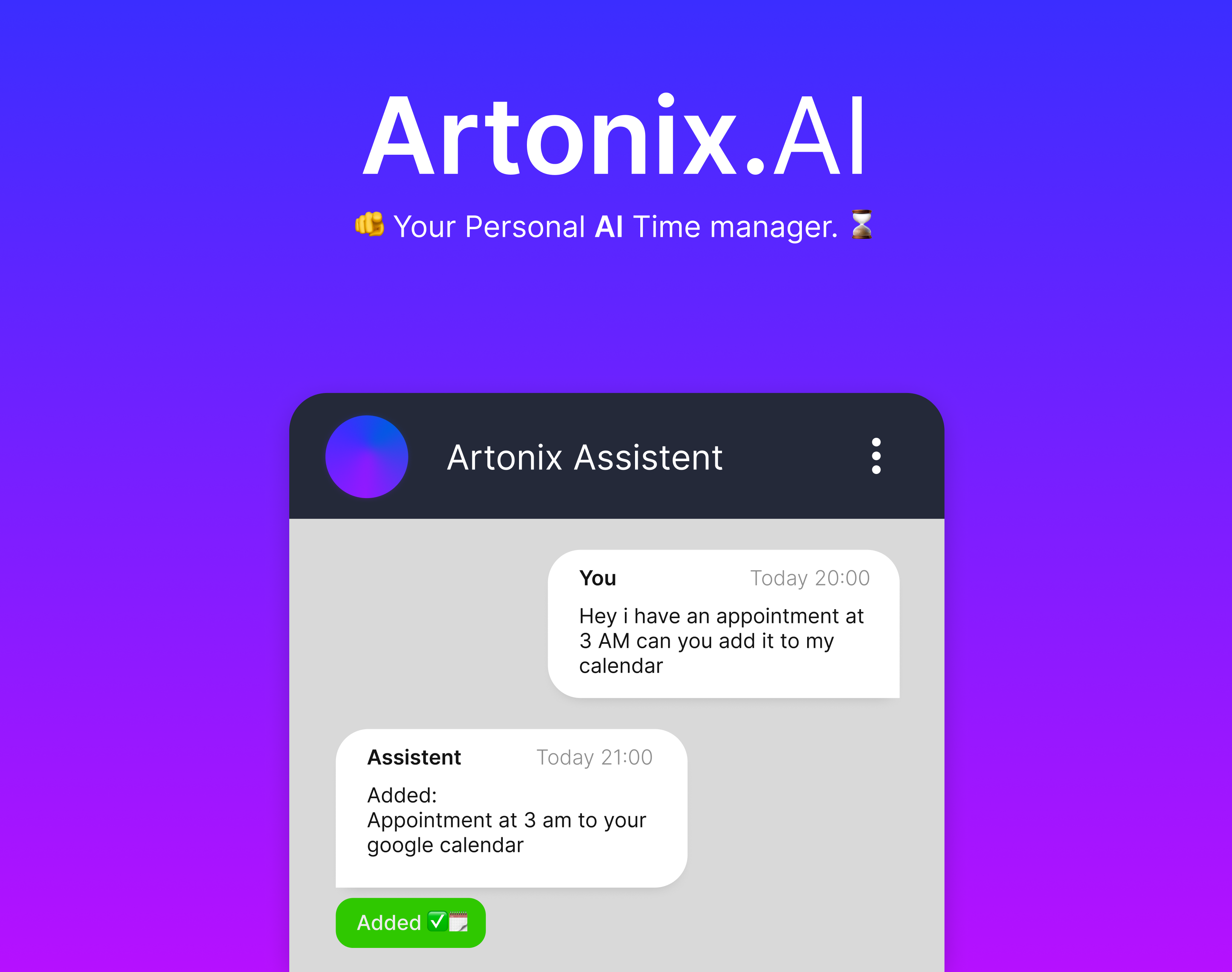
Artonix.AI
Artonix is an AI-powered scheduling assistant that seamlessly integrates with messaging platforms like WhatsApp. It helps users manage their calendar, set reminders, and organize tasks using natural language, making planning effortless and intuitive.

Hang On
Hang on was a team project withing Fontys. We had to produce an application that would improve the hang boarding experience for boulderers. Hangboarding can help with finger/grip strength improvement. This is an especially important part of bouldering/climbing.
